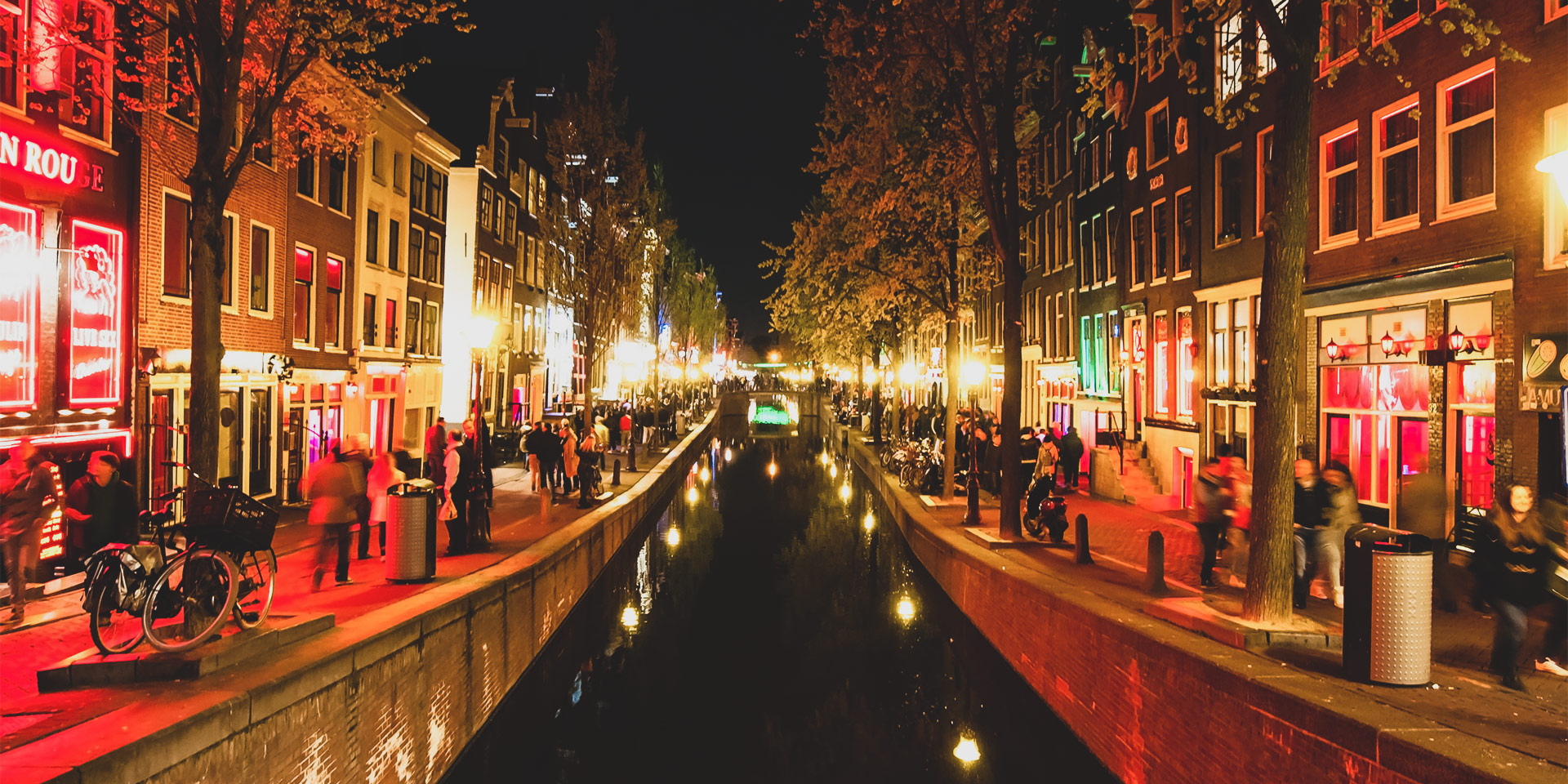More than 19 years ago, the Netherlands experimented with legalising prostitution, an approach that many countries looked at with interest and curiosity. After all, after the failure of the “noble experiment” of American prohibition, people wanted to see the result of the opposite approach with regards to sex.
The experiment of legalising prostitution in the Netherlands began on October 1st, 2000. The logic behind this decision was as simple as it was misleading: to turn prostitution into a profession like any other would make the income stream of sex workers more transparent, and protect the health and safety of both the buyers and sellers of sex.
More and more voices are currently pressuring the Dutch government to admit that legalising prostitution has been a social, legal and economic disaster. Instead of providing protection for women, it has made the lives of pimps and traffickers easier. Instead of restricting brothels to a discreet area of the city, the sex industry has spread to Amsterdam, taking to the streets. State-funded social services intended to provide protection to prostitutes were avoided by most of them, as they were too scared to make complaints to the authorities.
Legalisation has elevated the status of pimps to the rank of “managers” and “businessmen”.[1] The abuse suffered by women is now called “the risk of the trade”. The city of Amsterdam has become the “brothel of Europe”, with new waves of women being imported by traffickers from Africa, Eastern Europe and Asia to meet the growing demand. The dirty face of prostitution was not cleansed by the “legal blessing.”
In an article on the effects of legalising prostitution in the Netherlands, journalist Julie Bindel, co-founder of Justice for Women, says: “The Dutch government hoped to play the role of the honourable pimp, taking its share in the proceeds of prostitution through taxation”.[2]
By taxing prostitution, the government has sought not only to increase budget revenues, but also to ensure benefits for prostitutes, such as health insurance, paid leave or pensions. However, only 5% of the approximately 10,000 women in the Dutch sex industry have signed up to pay taxes, for the simple reason that no one wants to be known as a prostitute, no matter how legal the work is claimed to be.
Bindel describes the atmosphere in the Red Light District as the “sexual mecca of Europe”: The legalisation of prostitution has turned the Red Light District of Amsterdam into an area full of promiscuity, “full of drunken sex tourists who act as window shoppers, pointing and laughing at the women they see. Local women pass the streets with their heads down, trying not to see the other women displayed like cuts of meat in a butcher’s shop. Men can be seen entering the brothels, trying to barter down the price. Others come out zipping up their jeans. Many of the women look very young, all of them bored, with the majority sitting on stools in underwear playing with their phones. (…) and often condoms, drug paraphernalia and pimps are visible”.[3]
Top destination for human trafficking
Just six years since the legalisation of prostitution, the Netherlands has found itself on the list of the top 10 destinations for victims of human trafficking, according to a 2006 UN report[4]. Human trafficking also rose in the Netherlands, according to data provided in 2010 by the Dutch Coordination Center against Human Trafficking (CoMensha). Between 2000 and 2009, the total number of victims of human trafficking almost tripled[5], increasing from 341 to 909. In 2010, it hit 993, and in 2011 it increased by 23%, reaching 1,222.
In 2011, the main countries of origin of the more than 1,000 victims of human trafficking were the Netherlands itself, Nigeria, Hungary, Poland, Bulgaria, Sierra Leone, Guinea, China and Romania, according to the 2012 CoMensha report.[6]
In many cases, victims are deceived by certain people who persuade them to leave their countries of origin, promising them advantageous jobs in hotels, restaurants or as nannies. Once they arrive at their destination, victims discover they have been deceived and are forced into prostitution through threats or violence.
The “loverboy” phenomenon
Part of the influx of prostitutes is provided by the so-called “loverboys”[7]—attractive young men of Dutch, Moroccan, Turkish or Surinamese origin, who “hunt” vulnerable, underage Dutch young women and gain their trust and affection.
Traffickers usually target very shy or plump girls, who wear glasses or have small, visible defects. The pimps present themselves as “knights in shining armour”, immediately conquering these girls, who are usually among the marginalised.
“Teenage girls are looking for affection and validation. Men are good psychologists and know exactly what to offer in order to ensnare them. I think that the situation can be compared to that of the women who are beaten by their partners. If they tell them that they love them and that they didn’t mean to hurt them, they don’t press charges. In the case of teenagers who prostitute, the same mechanism applies”, says anti-prostitution activist Anita de Wit.[8]
Months later, after being seduced, the girls are drugged and gang raped, with their photos being taken in order to be used later on, to blackmail them. Confused, scared and too ashamed to tell their parents or teachers, the girls feel isolated from their old life and get trapped in prostitution.[9] As profiting from prostitution (pimping) does not fall under the Penal Code, traffickers seem invincible and the girls feel unable to prove the abuse.
In 2011, authorities investigated 242 such cases of “sexual slavery”, with half of the victims proving to be minors. “It’s only 1% of the actual number of abuses,” says Anita de Wit. She claims that, in reality, there are thousands of girls forced into prostitution. Anita conducts awareness campaigns in schools in Amsterdam, in order to warn students about the risks of entering relationships with the so-called loverboys. Anita started this campaign after her 15-year-old daughter was seduced by a Moroccan loverboy and forced into prostitution for three years.
The Red Light District – a magnet for organised crime
“Hard-line criminal behaviour is happening behind those windows. Girls are physically abused if they don’t work hard enough. It is slavery, which was abolished a long time ago in the Netherlands”, admits Lodewijk Asscher, former acting mayor of Amsterdam in 2010.[10] “Legalisation was naive”, admits Asscher. “We thought we had dealt with it better than anywhere else in the world,” he added.[11]
“We’ve realised this is no longer about small-scale entrepreneurs, but that big crime organisations are involved here in trafficking women, drugs, killings and other criminal activities”[12], acknowledged Job Cohen, former mayor of Amsterdam (2001-2010).
In 2005, Amma Asante and Karina Schaapman, two counsellors at the Dutch Labour Party, drafted a report entitled “Het onzichtbare zichtbaar gemaakt” (The Invisible Becomes Visible). In the report, Schaapman, a former prostitute herself, provided information on the flow of organised crime and violence within the “profession.” Similar reports were published during the same period, all concluding that a large number of prostitutes in Amsterdam were forced to work and were abused by pimps, and that the proposed goals at the acceptance of legalisation have not been achieved at all.
In response to the problems associated with organised crime, money laundering and human trafficking, the Dutch government has decided to close many prostitution businesses. In 2006, Mayor Job Cohen rejected the renewal of licenses for about 30 brothels in the Red Light District. In September 2007, Cohen decided to intervene even more firmly to control the phenomenon. Amsterdam City Hall bought 18 buildings from the “sex supermarket”, which led to the closure of a third of the shop windows. In late 2008, Mayor Cohen announced plans to close half of the 400 storefronts due to suspicions of certain illegal activities.
In 2009, the Dutch Minister of Justice announced that the plan envisioned by the authorities involved the closure of no less than 320 shop windows[13], with their number reduced to 100 by 2017.[14]
Emergency measures
In an attempt to reduce the likelihood of minors becoming victims of human traffickers, in 2009 Dutch lawmakers tabled a bill banning prostitution under the age of 21. The law did not pass, but in 2013, at the end of February, the city hall of Amsterdam decided to go on its own in this regard and impose the measure locally. Mayor Eberhard van der Laan justified his decision by saying that the youngest prostitutes are also the most vulnerable, often being lured by pimps and forced to work before the age of 18. “We think the situation is so grave that we have to act,” he added.[15]
In addition, the measures adopted by the municipality will also make a Dutch language test mandatory as a condition for engaging in prostitution. Given that 70% of sex workers (men and women) are foreigners, their employers are required to test their language skills to ensure that they can understand and be understood in discussions about working conditions, and their obligations and their rights. They must also be able to communicate with their customers (regarding the exact price and request boundaries), with the police and social workers, and deal with emergencies.
The Netherlands is reconsidering its strategy
The experiment of legalising prostitution in the Netherlands has been a failure, and the government has been increasingly willing to admit that recently. Alarmed by the scale of the human trafficking phenomenon, members of the Dutch parliament have said that they are willing to consider recriminalising the purchase of sexual services as a way to resolve the issue. Myrthe Hilkens, a member of the Dutch House of Representatives and a well-known fighter against pornography, will pay a working visit to Sweden, the first country to incriminate the purchase of sexual services, in 1999. The Christian Union Party of the Netherlands is also sending a representative, MP Gert-Jan Segers, to study the Swedish system, which has led to a significant drop in prostitution over the past 10 years.
it is not only the Netherlands that has understood that there are many lessons to be learned from the Swedish model of tackling prostitution. In December 2012, over 200 women’s rights organisations called for the criminalisation of the purchase of sexual services in the European Union. They have launched a legislative recommendation draft for the members of the European Parliament, which examined the various approaches to the phenomenon of prostitution, and elaborated their demands in a full report in 2014.
A spokeswoman for the campaign said on the occasion that “prostitution is a form of violence, an obstacle to gender equality and an open door for organised crime to develop”[16]. The campaign’s lead, the European Women’s Lobby (EWL), cites the example of Sweden, where the level of prostitution has halved since sex for money was outlawed more than a decade ago. By contrast, in the Netherlands, the country where prostitution was legalised, there was no improvement in the conditions of women, but rather an increase in human trafficking.
Why is the Swedish model appreciated?
Swedish anti-prostitution law, or the “Swedish model”, has proven to be an effective approach in many ways. On January 1st, 1999, Sweden became the first country in the world to criminalise, not the provision of sexual services, but their purchase.[17] As such, only 1,837 violations of the sexual services solicitation ban were reported between 1999 and 2008, with more than 800 of them being proven in court and punished.[18]
Under the Swedish Model, the buyer is the perpetrator and the prostitute is the victim. There are very few cases where prostitution is a voluntary decision.
Most women end up in prostitution due to tragic social and family circumstances or by falling victim to human trafficking. Numerous sociological studies show that most prostitutes have been victims of rape or various forms of childhood abuse, and 90% of them would choose to leave the profession if they were given the option.
Sweden has decided that the law on prostitution must be designed to motivate women to leave the “system”. Because they are not incriminated anymore, they are no longer afraid to contact the police (whom they perceive as “on their side”), hospitals or social services, and are much more willing to talk about the abuses they are being subjected to. Within five years of the law being implemented, it is estimated that about 60% of women involved in street prostitution have used this opportunity and left their jobs.[19]
In 2010, Anna Skarhed, Sweden’s chancellor of justice, published an evaluation report on the results of the criminalisation of the purchase of sexual services. Skarhed said she was very pleased with the report’s findings, saying, “We believe that this legislation has had the effects that were primarily intended.”[20] In this regard, perhaps the most significant fact is that during 1998-2008, street prostitution halved[21], while in Denmark and Norway, it doubled between 2003-2008.[22]
Progress almost never happens overnight. In Sweden, Norway and Iceland, it took decades of debate for the idea that prostitution laws were upside down to be accepted. It took a long time to figure out that incriminating prostitutes, who are the victims, and encouraging the clients, who are the perpetrators, was a recipe for disaster.
Until a better solution to the problem of prostitution is identified, the Swedish model remains the best approach available. Many European countries are already beginning to see this, including the Netherlands, which, after 12 years of complete legalisation of prostitution, is on the verge of declaring itself defeated, overwhelmed by the consequences of this disastrous social experiment.















